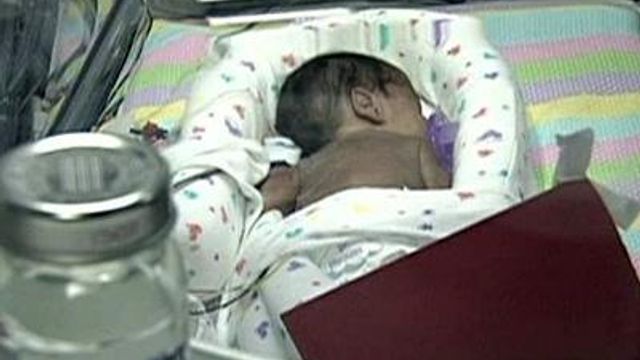Study sheds light on SIDS
Mary McClain, a registered nurse at the Children’s Hospital Boston, counsels families who have lost a baby to sudden infant death syndrome or SIDS.
Posted — UpdatedMary McClain, a registered nurse at the Children’s Hospital Boston, counsels families who have lost a baby to sudden infant death syndrome or SIDS.
“Parents, more than more than anyone else, want answers as to what happened to their baby, what caused their baby to die,” McClain said.
Dr. Hannah Kinney, also of Children’s Hospital, conducted a study that found a chemical deficiency in the brain is associated with the syndrome.
“We found that the babies who died of SIDS had abnormalities in serotonin in regions of the brain stem that control breathing and heart rate and blood pressure during sleep,” Kinney said.
Researchers suggest that if a baby is put face down in the bed, it begins to re-breathe carbon dioxide, which is toxic. They say a normal baby can lift or turn his head or wake up.
“But a baby who has a defect in those brain stem circuits that use serotonin can't do that when challenged and they go on to die,” Kinney said.
The study - published in the Journal of the American Medical Association - showed SIDS babies had about 25 percent decreases in levels of serotonin and other related chemicals in their brain stems.
“And over 50 percent decreases in receptors in different regions of the medulla of the brain stem,” Kinney said. “This is where we have found the major problems in SIDS. Although we have looked at all levels of the brain stem, the major problems are here.”
Researchers say the findings might give a biological basis for infants to be put to sleep on their backs.
In addition to placing babies to sleep on their backs to prevent SIDS, the March of Dimes recommends using tight-fitting sheets, keeping blankets away from the baby's face and removing all stuffed toys, pillows or pads from the crib.
Copyright 2024 JAMA. All rights reserved.





